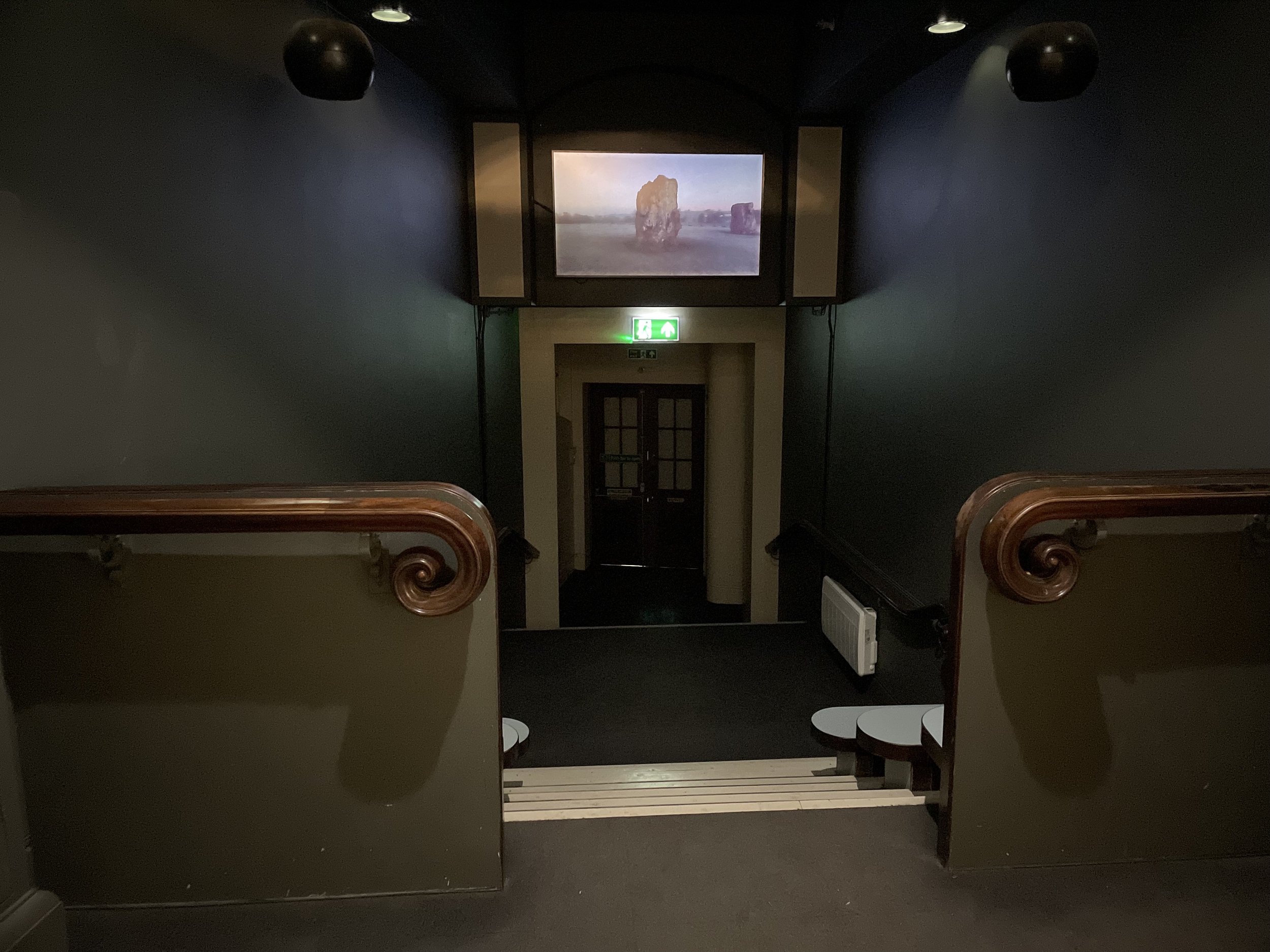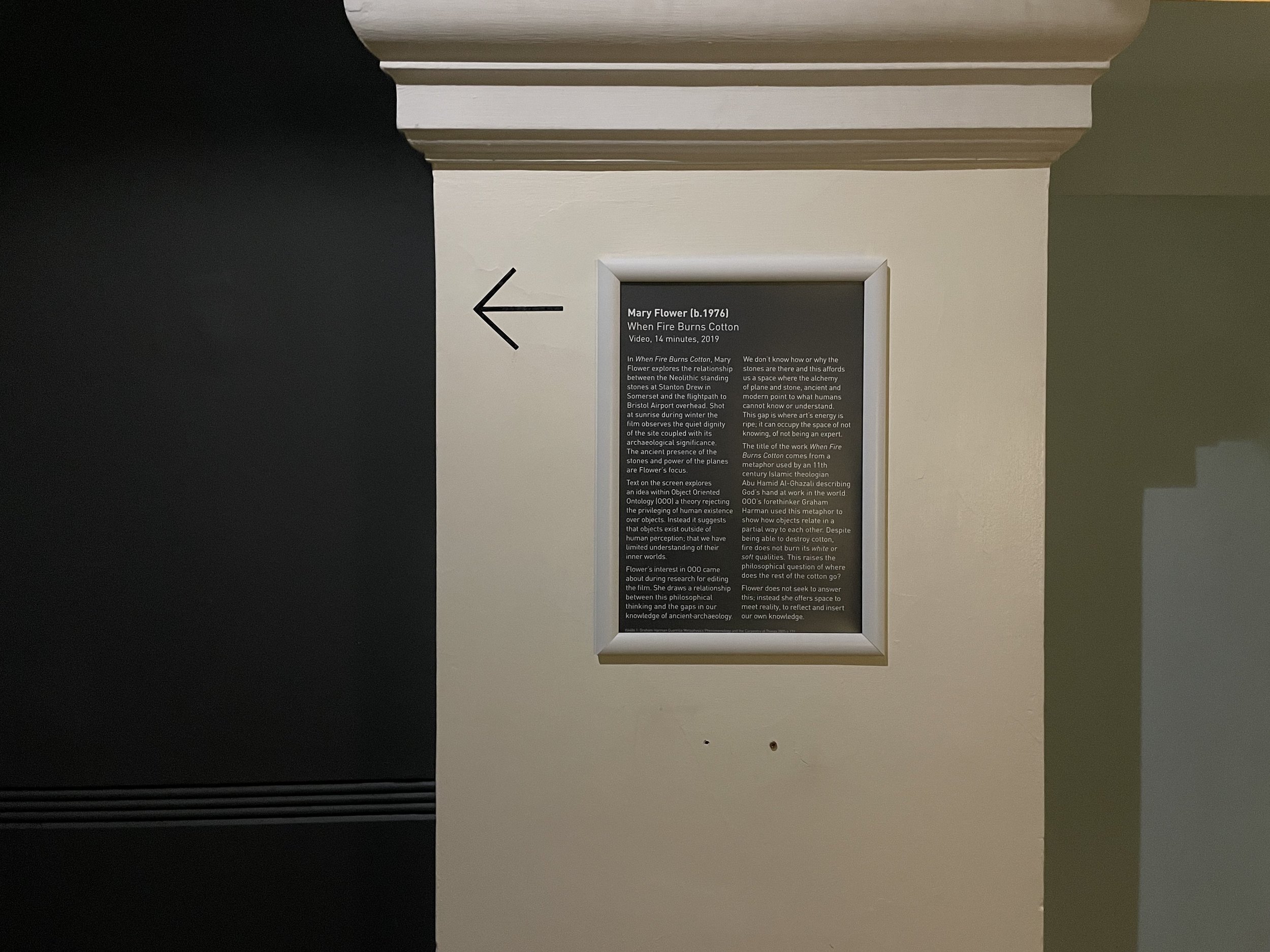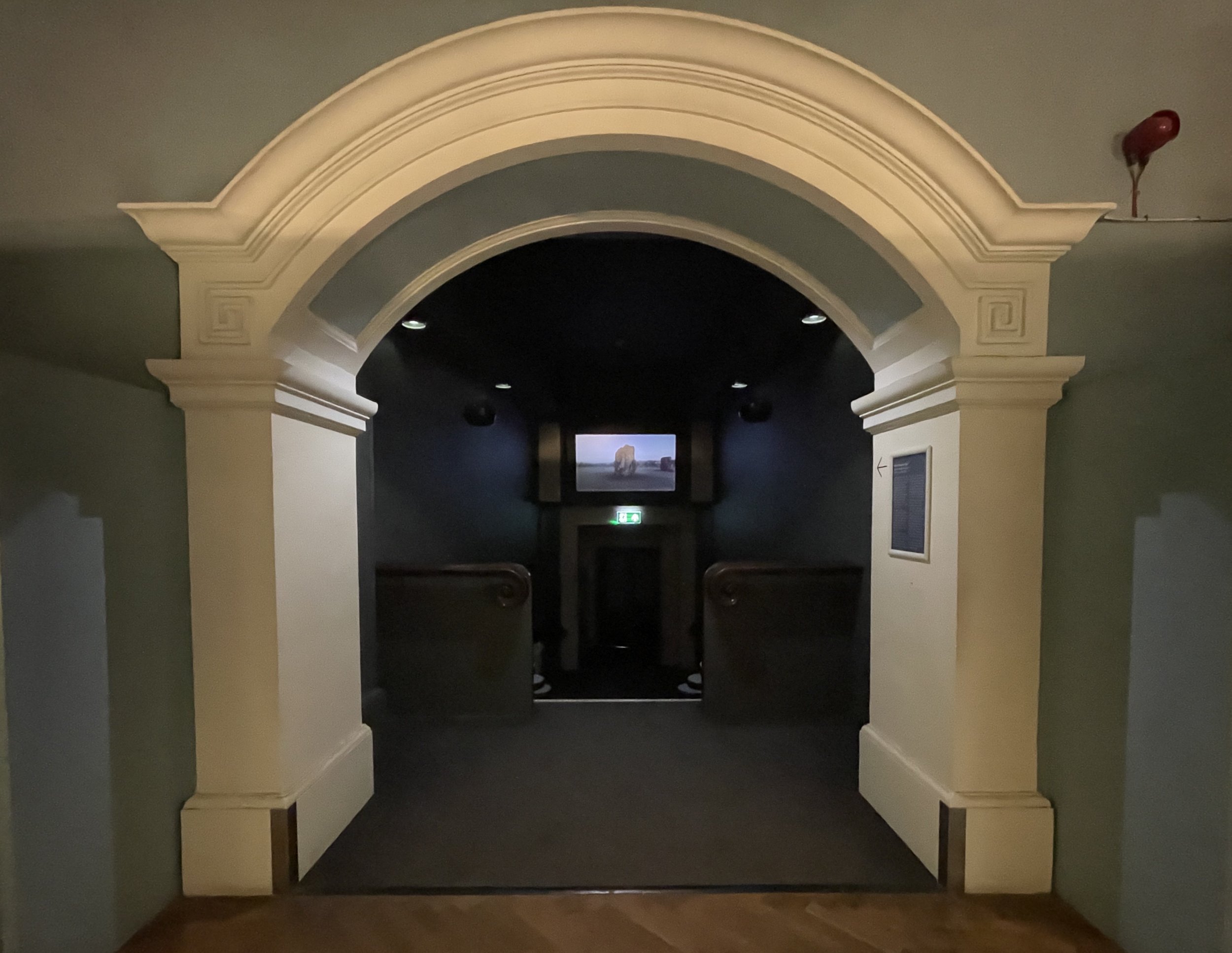


Images of video When Fire Burns Cotton installed at Bristol City Museum and Art Gallery. The work was on show from 2019 - 2020 in a space adjacent to the mineral displays.
Text accompanying the work reads “When Fire Burns Cotton observes the relationship between the Neolithic standing stones at Stanton Drew in Somerset and the passing airplanes. The stones sit on the edge of Stanton Drew village and the artist’s interest was sparked by the quiet dignity of the site coupled with its archaeological significance. The flightpath to Bristol Airport is overhead, and the intersection between the ancient presence of the stones and power of the planes became a focus of the work.
Within the work text explores an idea within Object Oriented Ontology (OOO) a theory rejecting the privileging of human existence over nonhuman objects. Instead it maintains objects exist independently from human perception; that we have limited understanding of their inner worlds or potential.
Flower’s interest in OOO came about as her focus on the relationship between the presence of the stone and the airplanes grew. She draws a relationship between this philosophical thinking and the gaps in our knowledge of ancient archaeology. We don’t know how or why the stones were set there and this affords us a space where the alchemy of plane and stone, ancient and modern point to what humans cannot know or understand. This gap is where art’s energy is ripe; it can occupy the space of not knowing, of dabbling in knowledge, of not being an expert.
The title of the work When Fire Burns Cotton refers to a metaphor used by an 11th century Islamic theologian Abu Hamid Al-Ghazali describing God’s hand in the workings of the world. OOO’s forethinker Graham Harman adopted this metaphor to show objects’ relationships being partial interactions; fire despite being able to destroy cotton does not burn its white or soft qualities. This raises the philosophical question of where does the rest of the cotton go and what of the gap?
Flower’s work does not seek to answer this; she offers instead space to meet reality, to reflect and insert our own knowledge.”